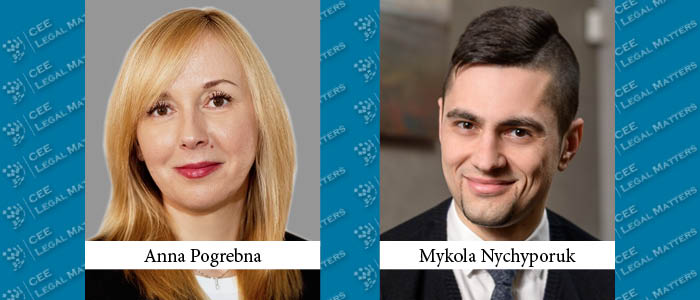ACI Partners Legal Manager Carolina Parcalab, Avellum Senior Partner Glib Bondar, Gecic Law Counsel Miodrag Jevtic, Vujacic Law Office Partner Sasha Vujacic, and Schoenherr Bulgaria Local Partner Tsvetan Krumov discuss the current status of capital markets in CEE.
Capital Markets: Not Great, Not Terrible
When discussing the status of capital markets overall, Vujacic has a rather positive view: “After the crisis year of 2020, significantly better results were achieved in the capital market of Montenegro, especially in terms of turnover on the Montenegro Stock Exchange and growth of new capital investment through corporate activities.” This, Vujacic says, can be attributed to “a significant influx of domestic and especially foreign investments in its capital markets,” as “Montenegro, with its location being at the crossroads between most significant parts of Europe, as well as its mild climate and enchanting landscapes, has always been more than inviting for foreigners and investors.”
In Bulgaria, Serbia, and Moldova, capital markets seem to be relatively less active in comparison. “Serbia is traditionally more oriented towards bank financing,” Jevtic notes. “Stock markets have experienced a slight downward tendency, with listed companies leaving the market, primarily due to shareholdings being consolidated with a small number of shareholders but also due to the costs of trading.” Jevtic further points out that “in 2021, the Belgrade Stock Exchange (BELEX) linked up with the Athens Stock Exchange to boost capital market activity,” however, “the 2022 reports have shown the total turnover on the regulated and MTP markets was approximately 7.21% lower compared to the same period in 2021.”
Krumov adds that in Bulgaria, “the number of public offerings on the Bulgarian Stock Exchange (BSE), which is the only domestic regulated market, is small, with less than 40 issuers having securities actively traded. According to the BSE’s statistics for the last three years, the number of IPOs was 6 in 2022, 21 in 2021, and 19 (in 2020).”
As for Moldova, Parcalab reports that “many local and international experts have noted on various occasions the insufficiently developed level of the Moldovan capital market,” adding that some voices even consider it to be non-existent. “These statements are partly true,” she continues. “Unlike developed countries, where capital markets emerged naturally as a response to market processes, the Moldovan capital market was created by regulatory reforms in the context of mass privatization in the early 90s.”
Bondar reports that in Ukraine, capital markets have experienced significant shifts in the past couple of years. “In July 2021, the Ukrainian Parliament introduced a new framework for issuing securities in Ukraine by implementing several key EU directives and regulations,” he says. “The new framework was widely expected to invigorate the Ukrainian local bonds market. However, capital markets in Ukraine were largely stifled in 2022 due to the Russian invasion, which had a profound impact on the economy and investor confidence.” According to Bondar, “throughout 2022, the issuance of new securities dwindled by nearly half in comparison to 2021,” and “a staggering 79% drop occurred in the corporate bond issuance.” Still, he says, “the first half of 2023 witnessed a gradual market revival: the number of securities issued almost tripled year-on-year reaching UAH 43 billion.”
Commonly Traded Instruments
Among these, the most common instruments traded in the capital market, are local corporate and governmental bonds in Bulgaria, Serbia, and Ukraine. “The most commonly traded instruments are shares in local corporate and governmental bonds,” Krumov says, with Jevtic adding that “BELEX’s trading includes shares and bonds of the Republic of Serbia.” Bondar also stresses that “domestic government bonds have historically dominated the capital markets in Ukraine, constituting 91.3% of trade in 2023. The market also includes sovereign and corporate bonds, municipal bonds issued by Ukraine’s largest cities of Kyiv, Kharkiv, and Lviv, and investment certificates.”
Parcalab reports that equity securities issued by Moldovan banks continue to be the most traded instruments. “The corporate bonds market was non-existent until 2023 when Moldova Agroindbank – one of the largest Moldovan banks – successfully issued corporate bonds that were admitted for trade on the Stock Exchange,” she says. “The total amount of the bonds offered is MDL 400 million, with a circulation term of three years and a floating interest rate, and represents an important step for the Moldovan capital market development.”
There are also some emerging trends in the local capital market. “There has been a surge in emerging financial products such as crop receipts and credit notes (credit-linked notes),” Bondar says. “There is intention for the development of the FinTech industry in Montenegro, including cryptocurrencies and blockchain, but that process is in its early phase,” Vujacic adds.
ESG Aspirations
Even though the capital markets are still in development in many CEE countries, ESG still has a notable influence. In Serbia, “although ESG factors have been around for decades, in recent years there has been a growing recognition among investors, corporations, and regulatory bodies,” Jevtic says adding that “they have become an integral part of investment strategies.” According to him, “in 2021, the Republic of Serbia issued EUR 1.0 billion worth of green eurobonds, for the first time,” while “investor demand during the auction exceeded EUR 3 billion – indicating significant investor interest in these bonds.”
“The integration of ESG considerations into the capital markets is an evolving theme in Ukraine,” Bondar reports. “While the ESG legal framework remains underdeveloped, certain steps have been taken. The introduction of green bonds in 2021 marked a pivotal moment, however, no local green bond issuances have materialized under this framework to date.” Nevertheless, he says, “notable instances of ESG-related financing included the issuance of green eurobonds by DTEK Renewables Finance B.V. (EUR 325 million) to expand DTEK’s projects in Ukraine, and by Ukrenergo (USD 825 million) to settle its debts to renewable energy producers.”
“At this point, the concept of green bonds is not developed in Bulgaria with there being no special capital regulatory treatment for investments in such instruments and no preferential tax on revenues from interest arising from green bonds,” Krumov explains. “Nevertheless, regarding solar parks financings which have been plenty in recent years we have seen a number of them being structured as privately offered bonds.”
Parcalab highlights Moldova’s aspirations to develop ESG in capital markets. “It is early to assess the ESG impact on investment decisions as ESG awareness is at an incipient stage in Moldova,” she notes. Still, “local businesses, in particular those that are members of international groups, have already started to implement ESG on a voluntary basis.”
And the “EU factor” is expected to drive developments in this area. In Montenegro, “we are obliged by our Agreement of Accession to the EU to follow the latest standards, so we have two levels: to educate market participants and after a certain period it is expected to gain some benefits regarding those standards,” Vujacic notes. Similarly, “considering Moldova’s status as an EU candidate,” Parcalab expects “that the interest in ESG implementation will increase.”
This article was originally published in Issue 10.9 of the CEE Legal Matters Magazine. If you would like to receive a hard copy of the magazine, you can subscribe here.


























